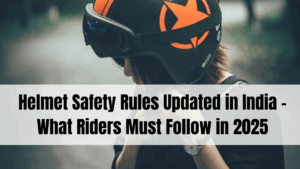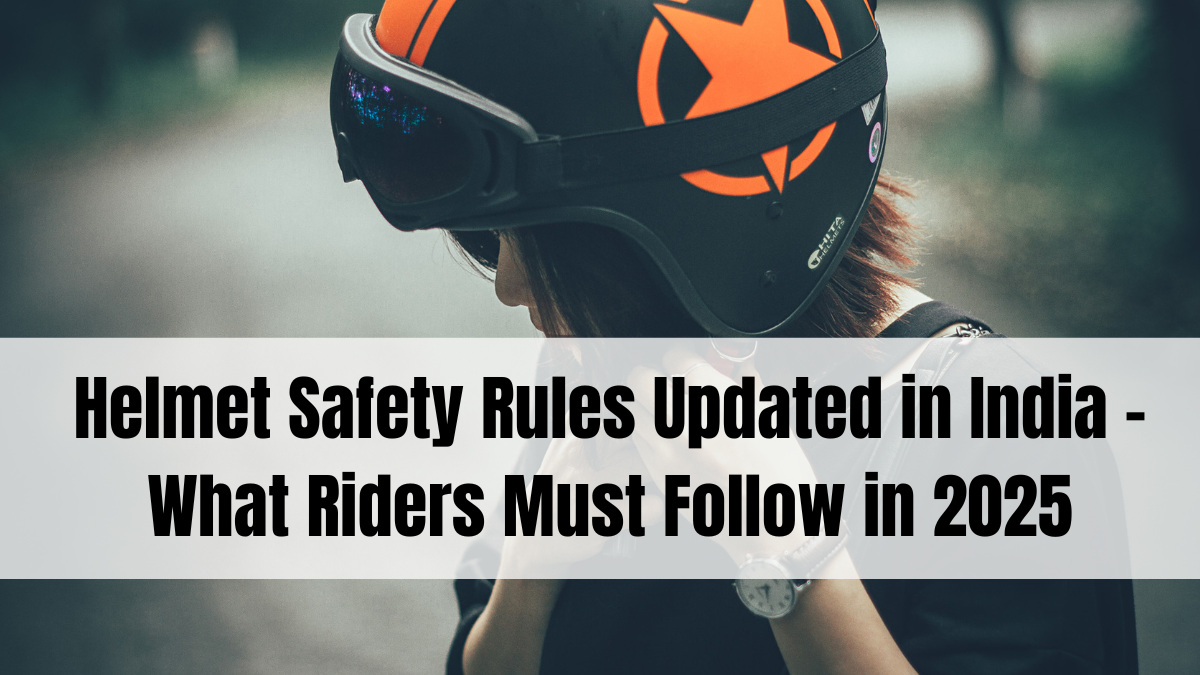Riding two-wheelers is a daily necessity for millions across India, but it comes with risks. To enhance road safety, the government has updated helmet safety rules India 2025, introducing stricter enforcement and clearer guidelines on helmet standards. Understanding these rules is vital for riders to ensure compliance, avoid fines, and protect lives on the road.
This comprehensive guide breaks down the latest helmet laws, types of approved helmets, penalties, and best practices for 2025.

Why Helmet Safety Rules Matter
Helmets are the most effective way to reduce head injuries and fatalities in road accidents. According to traffic safety studies, wearing a helmet decreases the risk of death by nearly 40% and head injury by 70%. The 2025 updates aim to close loopholes and increase awareness to encourage universal helmet use.
Key Updates in Helmet Safety Rules 2025
-
Mandatory use for all riders and pillion passengers: Both must wear helmets meeting Bureau of Indian Standards (BIS) certification.
-
Standards for helmets: Only helmets conforming to ISI mark and specific BIS standards (IS 4151) are legally allowed.
-
Helmet quality: Use of full-face helmets is strongly encouraged for better protection; open-face helmets must also be certified.
-
Fines and penalties: Increased fines for violations, starting from ₹1,000 and rising with repeated offenses.
-
Helmet inspection: Traffic police authorized to conduct random helmet quality checks on roads.
These measures align with global best practices for motorcycle safety.
Types of Helmets Approved in India
-
Full-Face Helmets: Offer maximum protection, covering chin and face.
-
Open-Face Helmets: Cover the head but leave the face exposed; must be ISI certified.
-
Modular Helmets: Convertible between full-face and open-face styles, also accepted if certified.
Non-certified or fake helmets are not permitted and will attract penalties.
Penalties and Enforcement
In 2025, police enforcement has intensified with:
-
Higher fines for non-compliance, which may increase further with multiple offenses.
-
Vehicle seizure or temporary suspension in case of repeated helmet violations.
-
Awareness campaigns coupled with checkpoints to encourage helmet usage.
Riders caught without proper helmets face legal action to reinforce safety culture.
Tips for Choosing and Using Helmets Safely
-
Always buy helmets from authorized dealers with clear BIS certification marks.
-
Ensure proper fit — helmets should snugly cover the entire head without discomfort.
-
Replace helmets every 3–5 years or after any impact.
-
Pair helmet use with other safety gear like gloves and riding jackets.
-
Educate family and friends about helmet importance and legal requirements.
Good helmet practices save lives and prevent costly fines.
FAQs
Is wearing a helmet mandatory for both rider and pillion in 2025?
Yes, both rider and pillion must wear ISI-certified helmets by law.
What are the penalties for not wearing a certified helmet?
Fines start at ₹1,000 and can escalate; repeated violations may lead to vehicle seizure.
Can I use any helmet purchased online?
Only helmets with proper ISI certification are legal and safe; avoid uncertified helmets even if cheaper.
How often should helmets be replaced?
Every 3–5 years or immediately after a crash to ensure continued protection.
Are full-face helmets mandatory?
Not mandatory but strongly recommended for maximum safety.
Click here to know more.
